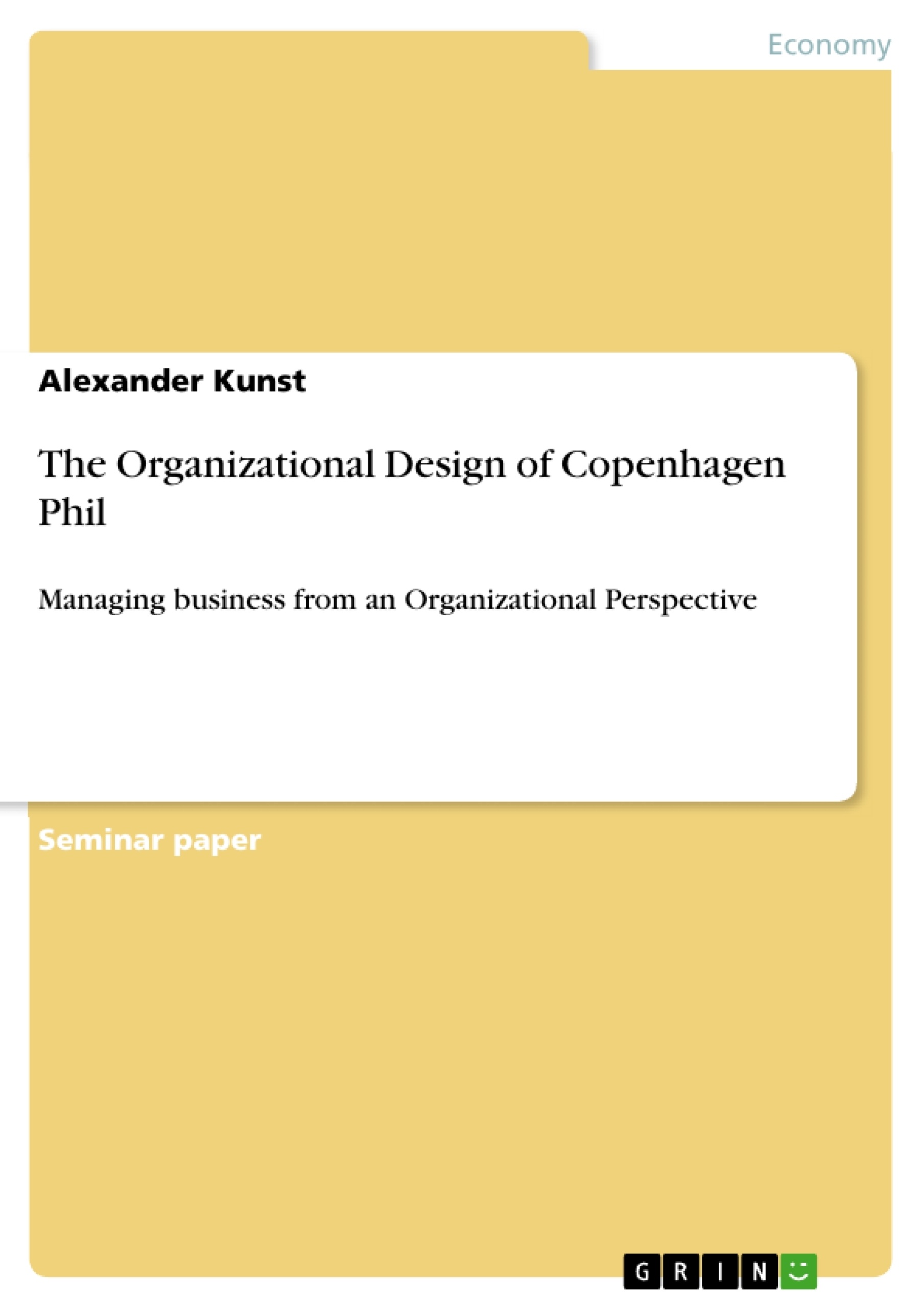Inside the organization there are three different identities that can be identified. The first consists of managers who lead the organization and cooperate heavily with the Ministry of Culture in Denmark, a so called “utilitarian identity” (Glynn, 2000). Their claims lie on the financial aspects as well as fulfilling all requirements the government is setting. The second includes “traditional” artists, a “normative identity” (Glynn, 2000), who strongly believes in the old traditions of playing as a symphony orchestra. Their claims are idealistic and music-driven. The third identity is also normative, but comprises “modern” artists, who are of the opinion that classical music can be performed in several valuable ways. These three identities collaborate effectively and efficiently with one another; however, there is the potential of conflicts to arise as their perceived identities differ from one another.
Inhaltsverzeichnis (Table of Contents)
- Analysis of possible organizational design options
- The current organizational design of Copenhagen Phil can be described as follows
- The Ambidextrous organization
- Conclusion
- What are the main challenges that arise from the environment of Copenhagen Phil and what are the implementations for empirical settings?
- Introduction
- The main challenges for Copenhagen Phil
- Conclusion
Zielsetzung und Themenschwerpunkte (Objectives and Key Themes)
This text explores the organizational design options for Copenhagen Phil, a symphonic orchestra facing challenges in its environment. The author analyzes the current organizational structure, including the three different identities within the organization: managers, traditional artists, and modern artists. The text then delves into the ambidextrous organizational model as a potential solution to address the challenges posed by the organization's changing environment.
- Organizational design and innovation
- Cultural differences and identity within organizations
- The ambidextrous organizational model
- The impact of external environment on organizational structure
- Stakeholder theory and its application to Copenhagen Phil
Zusammenfassung der Kapitel (Chapter Summaries)
The first chapter of this text examines the current organizational design of Copenhagen Phil, highlighting the three distinct identities within the organization and their potential conflicts. It also explores the role of culture and innovation in the orchestra's operations. The chapter concludes with a discussion of the challenges and opportunities associated with the organization's current approach to change and innovation.
The second chapter introduces the ambidextrous organization as a possible solution for Copenhagen Phil. This model suggests creating separate units for innovative and traditional activities, allowing the orchestra to simultaneously pursue both exploration and exploitation. The chapter discusses the benefits and challenges of implementing this approach, emphasizing the need for clear communication, resource allocation, and equal treatment of employees.
Schlüsselwörter (Keywords)
This text focuses on the organizational design challenges faced by Copenhagen Phil, a symphonic orchestra operating in a dynamic environment. Key concepts include the ambidextrous organization, cultural differences, innovation, stakeholder theory, and the impact of the external environment on organizational structure. The text also explores the importance of communication, resource allocation, and equality in fostering organizational change and success.
- Quote paper
- Alexander Kunst (Author), 2013, The Organizational Design of Copenhagen Phil, Munich, GRIN Verlag, https://www.grin.com/document/285678



